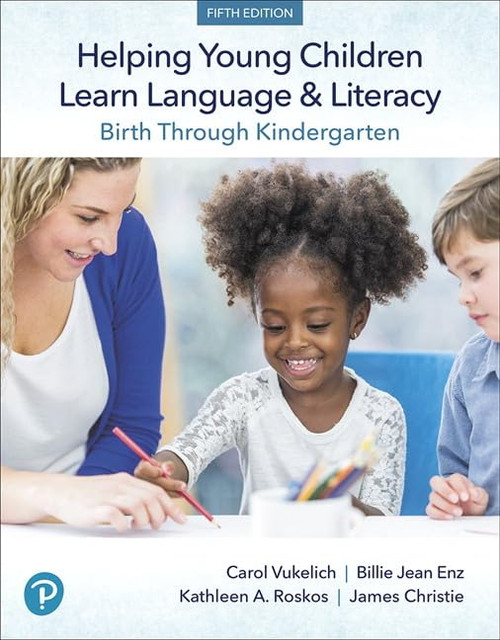This reading methods text focuses on a contemporary, active learning approach for teaching literacy. Its 11 chapters and teacher resource handbook help teachers develop balanced literacy programs using both direct and indirect instruction.
One of the text's hallmark features is its complete presentation of authentic children's stories, accompanied by sample lesson plans that guide teachers in developing their own lessons.
- A new full-color design and re-designed literacy lessons for each chapter improve the text's format and make it easier to use.
- Chapter 1, Focus on Literacy Learning, provides background about how literacy develops. The chapter emphasizes the stages of literacy development, the role of standards, how diversity impacts literacy learning, and the place of technology in literacy development.
- Chapter 2, Balanced Literacy Programs, presents models for a beginning balanced literacy program and for a balanced literacy program for grades 3-8. The chapter explores the Standards-based Literacy Lesson, the Minilesson, the role of reading aloud, and how to select texts for literacy instruction.
- Chapter 10, Developing a Management System for the Balanced Literacy Classroom, presents procedures for developing student routines.
- Chapters 4 and 5 examine Standards-Based Literacy Lessons. In Chapter 4, the Standards-based Literacy Lesson is developed around a new piece of literature, No, No Titus. Chapter 5 also includes a new lesson using a new piece of literature, Ananse's Feast. The lessons illustrate both direct and indirect instruction.
- Technology coverage, integrated throughout text, helps teachers use technology both to improve instruction and update their own teaching knowledge. A new list of technology resources is presented at the end of each chapter.
- The text explores how instructors can meet the needs of English language learners in diverse classrooms.
- The text focuses on how teachers can account for standards within instruction and use standards to guide assessment.










